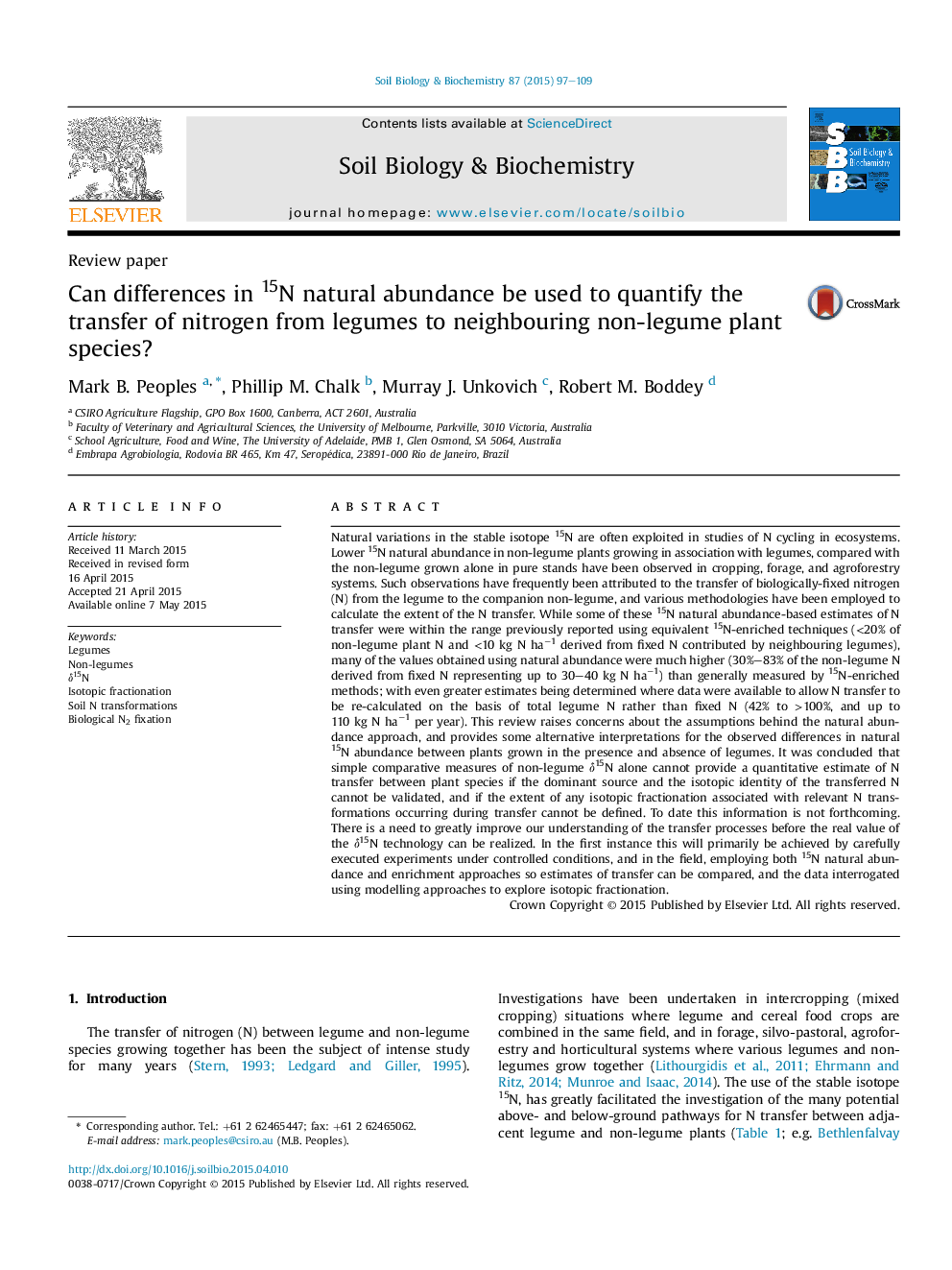| کد مقاله | کد نشریه | سال انتشار | مقاله انگلیسی | نسخه تمام متن |
|---|---|---|---|---|
| 2024505 | 1542597 | 2015 | 13 صفحه PDF | دانلود رایگان |

• N transfer between legumes and associated non-legumes follows multiple pathways.
• 15N dilution of non-legumes in mixed cf. pure stand is used to estimate N transfer.
• 15N natural abundance (NA) has been proposed as an alternative to enrichment methods.
• 15N isotopic fractionation during N transfer has not been considered when using NA.
• NA as it is currently used provides only a qualitative indicator of N transfer.
Natural variations in the stable isotope 15N are often exploited in studies of N cycling in ecosystems. Lower 15N natural abundance in non-legume plants growing in association with legumes, compared with the non-legume grown alone in pure stands have been observed in cropping, forage, and agroforestry systems. Such observations have frequently been attributed to the transfer of biologically-fixed nitrogen (N) from the legume to the companion non-legume, and various methodologies have been employed to calculate the extent of the N transfer. While some of these 15N natural abundance-based estimates of N transfer were within the range previously reported using equivalent 15N-enriched techniques (<20% of non-legume plant N and <10 kg N ha−1 derived from fixed N contributed by neighbouring legumes), many of the values obtained using natural abundance were much higher (30%–83% of the non-legume N derived from fixed N representing up to 30–40 kg N ha−1) than generally measured by 15N-enriched methods; with even greater estimates being determined where data were available to allow N transfer to be re-calculated on the basis of total legume N rather than fixed N (42% to >100%, and up to 110 kg N ha−1 per year). This review raises concerns about the assumptions behind the natural abundance approach, and provides some alternative interpretations for the observed differences in natural 15N abundance between plants grown in the presence and absence of legumes. It was concluded that simple comparative measures of non-legume δ15N alone cannot provide a quantitative estimate of N transfer between plant species if the dominant source and the isotopic identity of the transferred N cannot be validated, and if the extent of any isotopic fractionation associated with relevant N transformations occurring during transfer cannot be defined. To date this information is not forthcoming. There is a need to greatly improve our understanding of the transfer processes before the real value of the δ15N technology can be realized. In the first instance this will primarily be achieved by carefully executed experiments under controlled conditions, and in the field, employing both 15N natural abundance and enrichment approaches so estimates of transfer can be compared, and the data interrogated using modelling approaches to explore isotopic fractionation.
Journal: Soil Biology and Biochemistry - Volume 87, August 2015, Pages 97–109